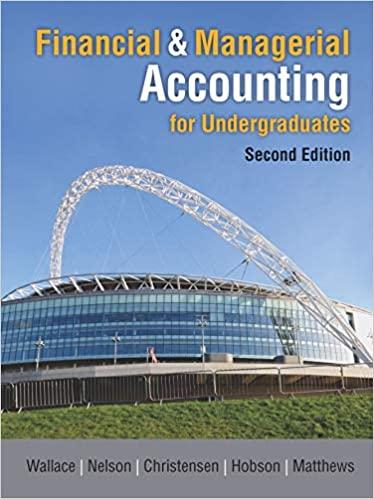Sally Smith owned a dance studio in San Francisco, California. Students could buy access to the dance
Question:
Sally Smith owned a dance studio in San Francisco, California. Students could buy access to the dance classes by paying a monthly fee. Unfortunately, many of Sally's students were struggling actors and actresses who lacked the ability to pay their bills in a timely manner. Although the students were expected to pay for classes in advance, Sally had begun offering credit to many of her students in order to grow her business. This, however, created a serious liquidity problem for Sally.

Sally's accountant, Matt Thomas, had tried to help her get a handle on the problem, but to little avail. One trick he had successfully used in the past to make Sally realize the seriousness of the problem was to overestimate the extent of Sally's debts; consequently, there currently existed a balance in the Allowance for Uncollectible Accounts totaling \(\$ 2,700\).
Required
1. The first step to help get Sally's business back on track is to write off all receivables having a very low probability of collection (i.e., those accounts over 150 days). Which accounts are affected and by what amount?
2. Prepare an aging of Sally's remaining accounts receivable. What should be the balance in the Allowance for Uncollectible Accounts?
3. Sally is in need of an immediate cash infusion and Matt has advised her to sell some of her receivables. A local bank has offered her two alternatives:
a. Factor \(\$ 40,000\) of "current" receivables (i.e., \(0-30\) days old) on a nonrecourse basis at a flat fee of 11 percent of the receivables sold.
b. Factor \(\$ 40,000\) of "current" receivables on a recourse basis at a flat fee of six percent of the receivables sold. Which option should Sally choose? Why?
Step by Step Answer:

Financial & Managerial Accounting For Undergraduates
ISBN: 9781618533104
2nd Edition
Authors: Jason Wallace, James Nelson, Karen Christensen, Theodore Hobson, Scott L. Matthews





